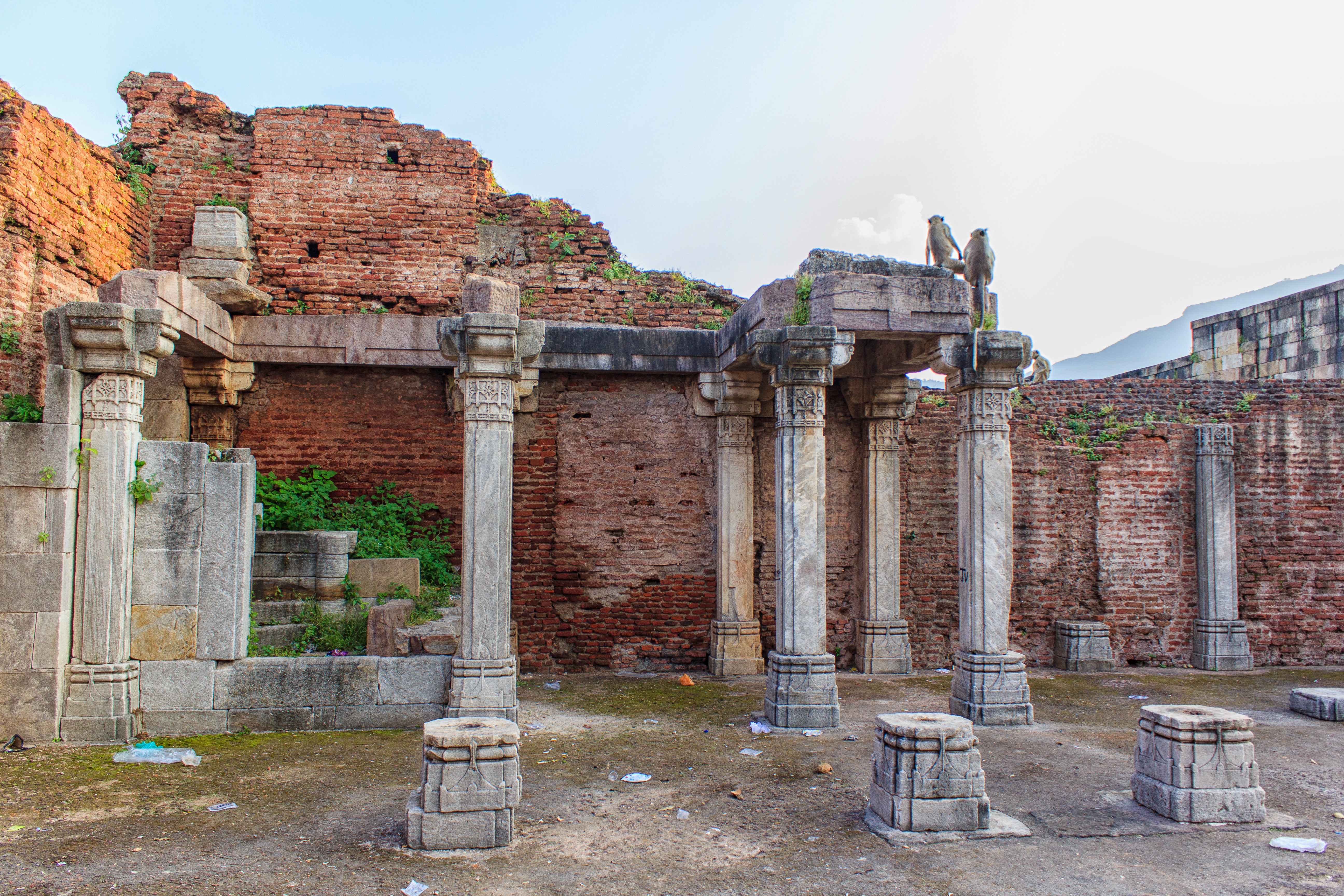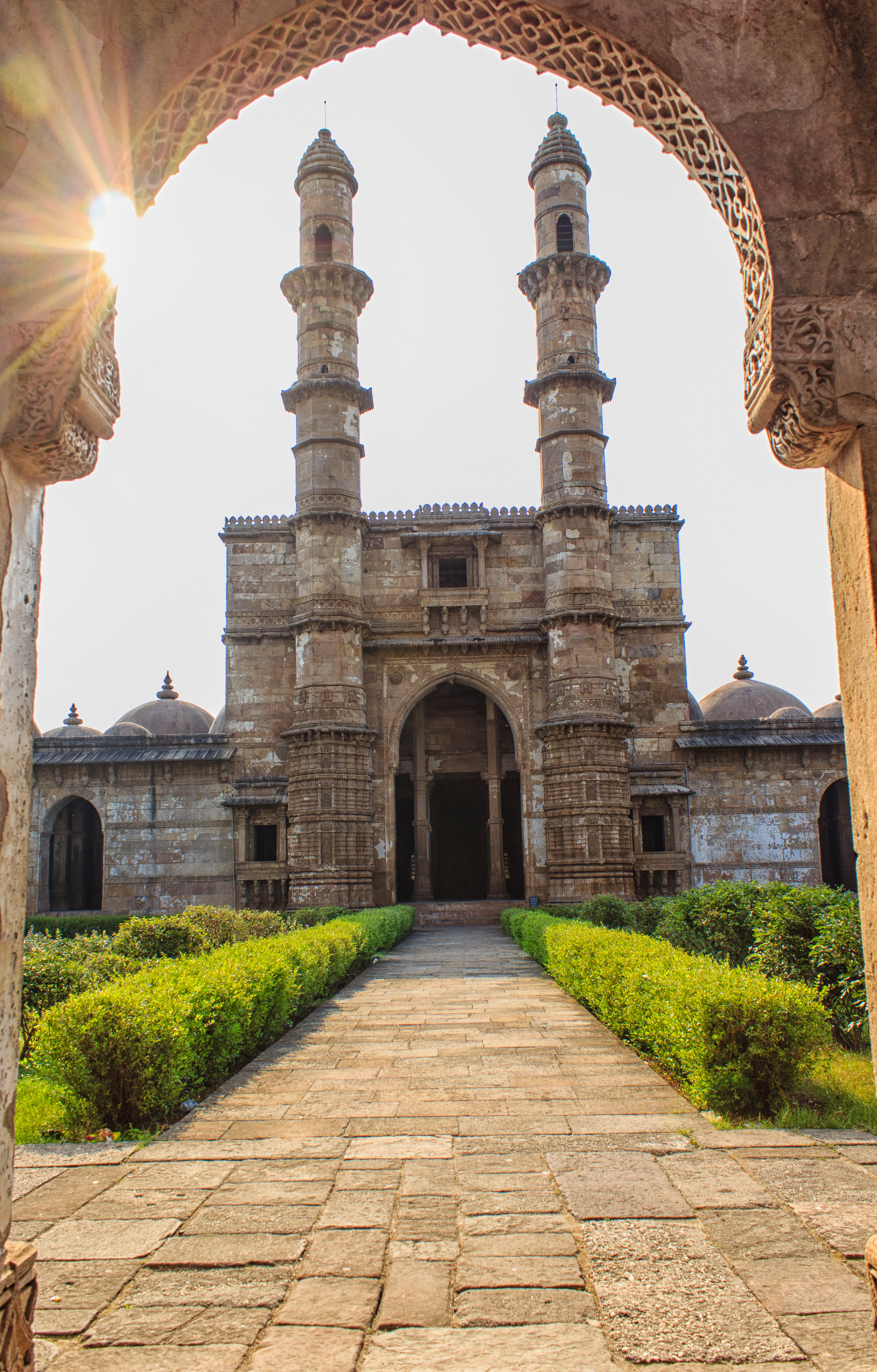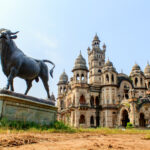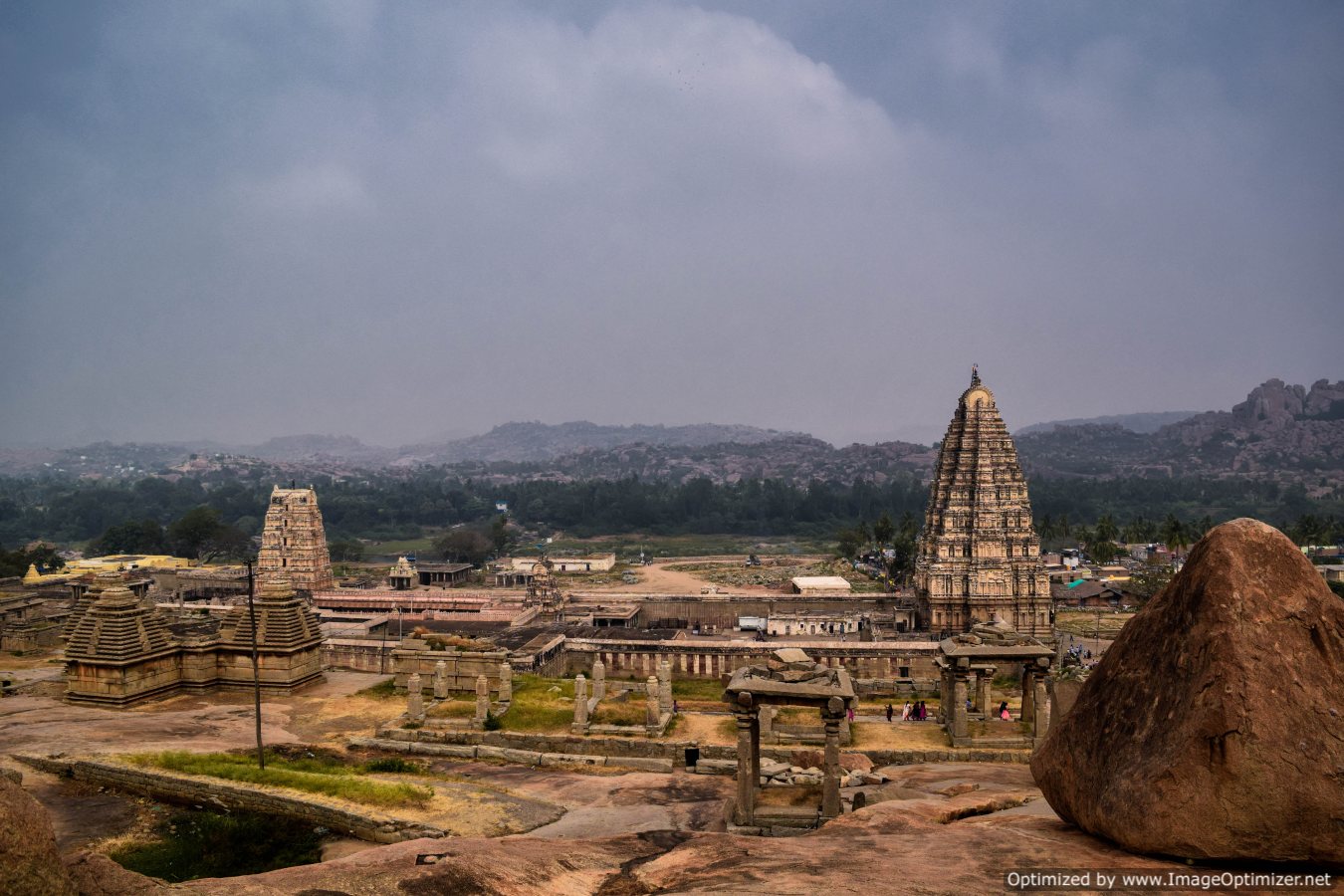‘In history lies all the secrets of statecraft’
Few faint images cross your mind when you talk about Champaner: a strategic trade route, the capital of one of the most influential sultanate, a graceful example of urban landscaping, mesmerizing muslim and jain architecture. But the loudest of all images is that of a ransacked, deserted city. In Champaner, history speaks in its ruins. A city which grew from a town of moderate importance to become the capital of an influential sultanate, flourished for decades only to be attacked, ransacked and left deserted and lost to wilderness, all in one century.

Champaner has everything of the old world charm, there are mosques, an old palace, a fort, a step-well and ancient streets you can walk on. Along with the hill fort and temple of Pavagarh it is now called the Champaner and Pavagadh Archeological Park. A one hour journey from Vadodara, brings you to this UNESCO World Heritage site.
Champaner has a fairytale history to tell. It was founded by the Rajput King Vanraj Chavda of the Chavda Kingdom in the 8th century. The neighbouring city Pavagadh worked as a buffer area between Mandu and Gujarat, and a key strategic point on trade routes emanating from Gujarat to whole of India. After years of flourishing under the Rajput rulers, Champaner was captured by Mahmud Begda in 1484, after laying siege to the city for nearly two years. He renamed the city Mohammadabad and moved the capital from Ahmedabad to here. In 1535, the city was captured by Humayun, and since the Mughals had control over both Gujarat and Malwa then, the city no longer enjoyed the status of a strategic buffer area, and the capital was moved back to Ahmedabad. This marked the start of decline of Champaner and rise of Ahmedabad. For the next four centuries then, the city was left in a perpetual decline state. When it was rediscovered by British, only 500 people inhabited the city.
Twenty years under the reign of Mahmud Begda gave this city models of urban planning to speak of. Being a capital and a strategic center, the city has huge fortifications especially on the upper portions which grow downward from there. We entered through stoned road with huge ramparts on both sides. These ramparts led to mosques that still stand sound, with some wounds of history. The mosques of that bygone era lied unassumingly in the middle of the ruins of the citadel. One such elegant piece is the Jami Masjid. The intricate carvings in the pillars, walls and the mehrabs can give rise to many an artist. The mosque seems wrapped in time, with the dome at the entrance gate missing, broken torans, rusted iron pillars, but the mosque stands to transport you to that bygone era. One interesting thing about the mosque is the eclectic mix of Persian and hindu style of design in the walls and the frescos. An evident piece is the kalash, a hindu religious symbol on the mehrabs.

Our next halt was the Shehar ki masjid, contrary to its name which indicates it been a civilian place, it was the mosque reserved for the royal family. A little plain in design, the mosque is constructed on a raised plinth and the central arched entrance is planked by two minarets. At some distance in a secluded corners are the Nagina Masjid and the Kamani Masjid. Kamani Mosque is different from other mosques of Champaner as it follows the arcuate style (column and arch) indicating that it was built towards the end of sultanate period in Gujarat when this style had started gaining popularity.

Uphill enroute holy Pavagarh trail, is the Pavagarh Fort, located on the summit of the abrupt hills. The wide fortification walls, which once ran upto six kilometers, now stand in ruins with remains of variable height extants. Between the southern and the northern Gate, one can still find the patterns of the urban planning. In these complexes, one can find streets, civil baths, town patterns and even rows of shops, all having lived through the vagaries of time. Here one can come across the layouts of the magnificent pleasure pavilions or the baradaris built during Mahmud Bagada’s reign. The whole area is now an excavation site and the ASI never misses finding some rare jewels here. There are also graveyards, mausoleums and even richly decorated temples in these ruins.
As one moves uphill, following the Patha (pilgrim’s route) leading to the ropeway to the Kalikamata temple, one comes across many architectural structures that were forerunners of the architectural styles adopted later. The elements indicate a fine import of hindu design in the muslim architectural ideology. Unlike the present mosques styles, some tombs are almost all square in plan, with a dome resting on columns. Another elegant structure on the hills is the seven arches (saat kamaan) of which only the six arches remain. Built from yellow sandstone in arch form, this served as a military base. Inside the Pavagarh fort, are some early hindu and Jain temples. Standing on one end and looking at the ruins and layout of the fort, one can redraw the architectural prowess of that era.
One thing that makes Champaner stands out among all its contemporaries is the adroit townsmanship, which one can still trace in the ruins. The water distribution and conservation plan adopted find a special mention. Arranged in a circle with the Jami Masjid in the center, the water arteries run upto all nine gates of the city. Over hills there are evidences of large reservoirs and earthen beams which drained into these reservoirs to collect the rain water running downhill. This entire series of arteries and water reservoirs, eventually ended into the largest lake, the bada talao, on the plain below the city. In addition, there were multiple stepwell, like the helical stepwell and the vazu tanks in the mosques which served dual purpose of water harvesting and religious ablutions. In some of these structures, you can still find water, albeit with plastic bottles floating on the surface. The houses too had a rainwater harvesting system, with the water draining into small tanks, to be used by the individual buildings. The big mosques like the Jami masjid also had elaborate water harvesting structures in their compounds.
We headed towards the bada talao, where another beautiful, dilapidated structure draped in bright orange of the dusk, was waiting for us. Even though only the walls remain of Khajuri mosque, this structure deserves a long stay.
With my feet tapped in the bada talao, I looked at the Pavagarh hill, and the mystery draped in the evening mist. I overlooked a small town spreading across the floor of valley and trailing up the bare hills, with a lake in the middle and ruins of a fort looking down at it as guardian; the setting seemed a miniature painting of a place inextricably caught in the web of history; tucked on the horizon.
Fast facts:
Champaner is around 45 Kms from Vadodara accessible by both bus and taxis. On the way is the Kevdi Eco- campsite, where the star attraction is the flying squirrel.
There are around 40 big and small monuments in Champaner and guide takes INR 100 per monument. Inspite of being a world heritage site, there are no ASI licensed guide in Champaner. Locals have been trained and they are the usual ones who take you around. There are 11 monuments which have real importance and the guide can settle for something like INR 800-1000 for the whole deal. Seeing 11 monuments in itself can take a full day. In case you are looking to capture the real essence of Champaner, reserve two days for it.

Aakash Mehrotra









[…] The original post can be found here. […]